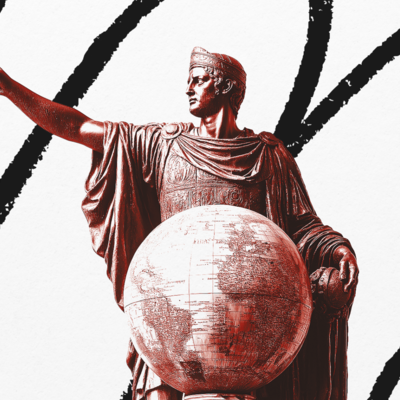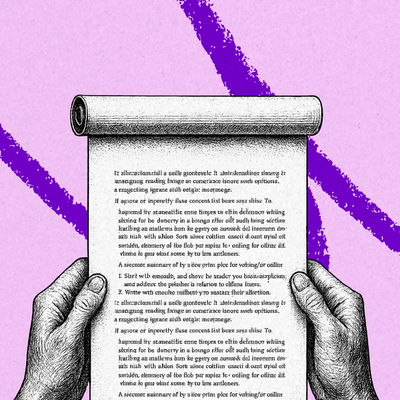
Sponsored By: Hubspot
Supercharge your work day with HubSpot’s guide to using ChatGPT at work.
Learn to automate tasks, enhance decision-making, and foster innovation, all through ChatGPT.
Download the free guide for actionable insights and tips on harnessing AI for a more productive and impactful professional life. Plus, get access to 100 prompt ideas to help you unleash the power of ChatGPT.
Access the free guide today and discover how AI can elevate your productivity and creativity.
Was this newsletter forwarded to you? Sign up to get it in your inbox.
Let me tell you a dirty little secret: Every media company you know is panicking. Traffic from social media is declining, consumers have subscription fatigue, and the advertising market is still sagging. As a result, layoffs are rampant. More than 500 journalists lost their jobs in January alone.
You know who else is panicking? Creators, who have been told that creator economy startups like Patreon and Substack will help them escape the shackles of these media companies and run their own businesses. While social media and search engines may send them some traffic, they are subject to similar declines as larger media organizations, making it harder to grow. The real winners have been the platforms that aggregate user attention and turn content creators of all sizes into commodity suppliers—YouTube, X, TikTok, Instagram.
The societal results of the evolution of our media ecosystem have been mixed. Mark Zuckerberg owns half of the island of Kauai, tech CEOs are buying yachts left and right, and our information ecosystem is broken. The current mix of distribution and incentive structures has yielded a polarized populace, short-form video addiction, and, at least for me, a measurable decrease in IQ. There are—of course—silver linings. This newsletter, for one! We wouldn’t exist without social media. Many other wonderful businesses and causes have come to being within the internet’s current paradigm.
Still, I think there is a better way. We need a new attention aggregator that increases creator earnings and incentivizes creators to produce thoughtful, long-form, sane content. There needs to be a creator economy startup that goes right for social media’s throat.
And it needs to be a notch more ambitious than the current crop of creator economy startups, which exist as peripheral software suites in the media ecosystem. They manage consumer subscriptions (Patreon) or help creators sell newsletters (Substack), courses (Kajabi), or digital goods (Gumroad). These companies are like mice, satisfied with crumbs of a few hundred million of ARR while YouTube pulled in $31.5 billion last year in revenue.
To produce a great outcome for investors, creators, and consumers, I propose a solution: a rollup. Patreon should start by raising a large amount of capital and purchasing Substack.
At its last funding round in 2021, Patreon was valued at $4 billion, while Substack was valued at $650 million in a 2023 community fundraising round. Combined, and accounting for the growth in the intervening years, it’s reasonable to assume a roughly $5 billion valuation for the combined entity. This NewCo would have enough creators, users, and credit card data to present as a legitimate challenger to smaller social media providers like Snap, X, or Pinterest. Most importantly, the combination would remove the weight of the historical product roadmap. It could be more ambitious in its vision, more direct in its goals. Both companies have made tentative moves toward competing with Facebook with their apps—this acquisition would give them the space and scale to go all in.
Here’s how it would work.
The economics of a roll-up
Patreon and Substack are among the biggest winners in the creator economy because they created products that the aggregators weren’t willing to:
Patreon: Cross-platform subscription management
Substack: Paid newsletters (which has transformed into a reader app)
On their own, neither will fix the ecosystem’s problems. Patreon and Substack exist around the edges of social media platforms, which materially shrink their prospects and limit their impact. However, if they are combined, they have a chance at beating them.
The Only Subscription
You Need to
Stay at the
Edge of AI
The essential toolkit for those shaping the future
"This might be the best value you
can get from an AI subscription."
- Jay S.
Join 100,000+ leaders, builders, and innovators

Email address
Already have an account? Sign in
What is included in a subscription?
Daily insights from AI pioneers + early access to powerful AI tools









Comments
Don't have an account? Sign up!
Amazing post Evan. Desperately needed by all constituent parties. Two strings, I think, are worth pulling on and giving some more thought to are dealing with the big platforms and the whole consumer attention piece. Yes, creators need better, broader, richer incentives. Revenue sources should be broadened and multiplied. More monies should flow faster, further, and more voluminously to creators. Your point about a creator middle class is critical. Tiny pieces of other tiny pieces controlling large pieces might be good for someone, but is necessarily bad for everyone else, especially creators and audiences. Operating a creator business, I also agree, should be far less cumbersome A bc we have the tech to do that and B bc great content takes time. My concern is that despite all this there still appears to be a collective “hands in the air” capitulation to bigness (of the winning platforms) and attention (ours). If things were normal out there, I suppose, we’d have to accept this. But things are far from normal and it’s more than the 50% of Americans who endeavor to decrease their social media use over the next year. Parents and schools are finally starting to say no the crack cocaine we hand our children when they’re barely old enough to buy a lollipop on their own. People, en masse, are tiring of the algorithmic control of their lives and the war on their attention. In fact, I’m starting to see a war on the war for our attention. I’m thinking that any newco roll-up strategy with designs on fixing the creator economy has a better chance of doing so by also trying to address the broken pieces of the consumer economy. Bigness for the sake of swapping one big thing for another big thing a/o one giant piece of our limited attention for another, I fear, will only bring us right back to where we started.
I don’t profess to have the answers, and I do think your patreon/substack proposal has a lot of merit. Further, I fully understand the desire to eat big platform’s lunch, but if that ultimately results in newco just becoming bigco 3-5 years from now, whose lunch was actually eaten?
…while also breaking up the Meta ecosystem and getting these highly successful and highly aggressive units to compete among themselves instead of using information from one to boost earnings in another…
(PS Good post! Anything that can promote creators is a good idea!)
"We need a new attention aggregator that increases creator earnings and incentivizes creators to produce thoughtful, long-form, sane content. There needs to be a creator economy startup that goes right for social media’s throat."
It's called beehiiv...
@ej_3321 that’s not quite right—Beehiv is an email first SaaS tool. An attention aggregator has a primary app that consumers use to interact with all creator content.
In all seriousness... keep that garbage site away from Substack. If Patreon wasn't part of the problem, Substack wouldn't be what is it. Keep those grubby, dishonest hands off.
I don't think this propose solves the problems because this NewCo would still be highly dependent on other social media platforms to drive audience. I'm not bought in the argument that just a join of Substack and Patreon would be enough to increase Substack to a position of a content hub where people go directly (no more than it is today).
What if Automattic acquired Substack? It’s another interesting thought experiment.